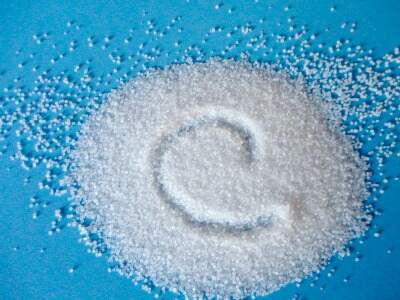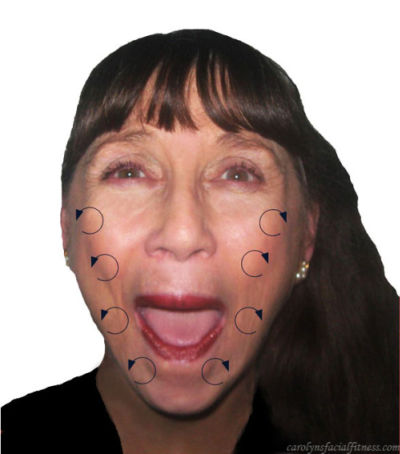by:Linda Robison/ Facial Fitness Specialist @ ABZ
If vitamin C is a skincare hero, why don’t we always see results?
Simple:Not all vitamin C products are made the same. I’ll show you which type actually works—and what made a difference in my own skin.

Key benefits of topical vitamin C for skin
Vitamin C can:
- Brighten dull or uneven skin tone
- Fade sun spots, age spots, and brown patches
- Support collagen production and firmness
- Improve overall skin texture and glow
But to get those results, you need the right type, concentration, and application method.
4 Reasons your vitamin C serum might not be working
I did some investigating to see what the deal is with topical vitamin C for skin health and anti-aging, and here is what I found:
-
It’s not fresh:
Vitamin C breaks down quickly once mixed with liquid. Many serums are already oxidized before they reach the store shelves. -
It’s too weak:
Moststudiesuse 10–20% L-ascorbic acid. If yours is under 10%, don’t expect much. -
It’s the wrong type”
L-ascorbic acid is the most researched, fast-acting form. Other versions may be gentler—but slower or less effective. -
No exfoliation:
Dead skin buildup blocks absorption. Gentle exfoliation a few times a week can boost results.
Once I found a product that met all these points …I saw those wonderful benefits I’ve been reading about, especially on my face and neck.
 My real results: This brown spot on my neck faded after using fresh vitamin C daily, gentle exfoliation, and a botanical face mask.
My real results: This brown spot on my neck faded after using fresh vitamin C daily, gentle exfoliation, and a botanical face mask.What I used to fade my brown spot (vitamin C + extras)
 This is the vitamin C combo I used—mixed fresh each day to help fade my brown spot.
This is the vitamin C combo I used—mixed fresh each day to help fade my brown spot.Here’s what finally worked to lighten the brown spot on my neck:
- 16% L-ascorbic acid powder, paired with its own vitamin-rich serum as seen above. You mix a small amount daily.
- Exfoliation 3 times a week with a gentle cleansing scrub
- A botanical face masque made with organic apple cider vinegar on off days
✨ The combo of fresh vitamin C, regular exfoliation, and deep cleansing made the difference—especially for my neck and lower face.
Mixing update:
Want the freshest, most potent vitamin C for your skin? Don’t premix it.
Vitamin C breaks down quickly when exposed to air or liquid—this method keeps it powerful.
Watch how Carolyn does it in the video below:
This method works for all skin types—but it’s especially helpful for dry, mature, or crepey skin.. And works very well to lighten dark or brown spots.
How to apply vitamin C for better results
Apply to clean, dry skin—then massage it in.Studies show facial massage can visibly reduce wrinkles and may even improve how well your skincare products work.
- Use small circular motions across your cheeks, chin, and temples.
- Add a quick face lift massage for even better absorption.
💡 Try this: I follow the Circle Up Rub from Carolyn’s Facial Fitness. It’s a simple technique that helps firm muscles and boost circulation.
 Carolyn demonstrates the Circle Up Rub—a quick face massage that helps vitamin C absorb better and supports firmer skin.
Carolyn demonstrates the Circle Up Rub—a quick face massage that helps vitamin C absorb better and supports firmer skin.Circle Up Face Massage Instructions
This massage is designed to smooth the skin and firm the muscles of your face. Here’s how I do it:
Step 1 – Prep Your Face:
Apply vitamin C serum to clean, dry skin.
Step 2 – Make an “O” Shape:
Open your mouth wide to form a big “O.”
Step 3 – Position Your Fingers:
Place your fingertips on either side of your chin, just under your mouth.
Step 4 – Massage Your Face:
Make small counter-clockwise circles as you move up your cheeks and over to your temples. Repeat 5 times.
Don’t Forget Your Neck
This method helped me fade a brown spot on my neck:
- Tilt chin up to tighten neck skin
- Use small circular motions, 5x per side
- Do it daily with your serum
Vitamin C vs. Niacinamide: Which is better for spots?
Both lighten skin but work differently:
- Vitamin C reduces melanin production (deep source of pigmentation)
- Niacinamide stops melanin from reaching the surface
📌 Best combo: Using both can give better results for uneven tone or brown spots.
Why “fresh” vitamin C makes a difference
Freshly mixed vitamin C is:
- More potent
- Less likely to irritate
- Better at targeting sun damage and brown spots
If your product smells off, turns brown, or feels sticky—it’s likely oxidized and no longer effective.
What to look for in a vitamin C product
What to look for when choosing a vitamin C skincare product?
- L-ascorbic acid – the most effective and well-studied form
• 10–20% concentration – strong enough for results, but start low if you’re new
• pH between 3.5–5.5 – effective without the sting (I’ve gone too low before—my skin wasn’t thrilled)
• Airtight, dark packaging – helps prevent oxidation
• Option to mix fresh (crystal powder form) – keeps it potent longer
• Water-based formula only – vitamin C won’t dissolve in oils
Why crushing vitamin C tablets don’t work
You’d be surprised how many people try to make their own vitamin C serum by crushing tablets. I’ve done it. It felt resourceful—but honestly, it didn’t do a thing.
Here’s why: most store-bought vitamin C tablets are buffered for digestion, not designed for your skin. They usually contain fillers or neutralizers like sodium bicarbonate, which stop the vitamin C from penetrating.
Plus, there’s no way to measure the pH or potency—so even if your mix feels strong, your skin might not actually absorb much of it.
If you want results (without the guesswork), stick with L-ascorbic acid in a form meant for skincare. That’s when I finally started seeing actual changes.
Other forms of vitamin C (if you’re exploring)
If you’re curious about alternatives, here are a few that may work better for certain skin types:
I’ve tested several over the years, but I always come back to the fresh powder + serum combo. It’s the only one that gave me visible results on real brown spots.
Side effects
While side effects are minimal for most people, everyone’s skin reacts differently.
So it’s always smart to do a quick patch test—especially if you’re new to vitamin C.
- Tingling or redness: Common at first, especially with stronger formulas.
- Photosensitivity: Vitamin C can make your skin more sun-sensitive, so always pair it with SPF (look for PA+++ if possible).
- Allergic reaction (rare): If you have sensitive skin, test a small area first just to be safe.
FAQs
Answer:Yes—and actually, they can work even better as a team.Vitamin C helps slow melanin production at the source, while niacinamide reduces how much of that pigment makes it to the surface.
That combo means fewer dark spots, a more even skin tone, and brighter-looking skin overall.
Answer:Yes—and I’ve seen real results from it.
When I was dealing with sun spots and uneven patches, I added kojic acid, alpha arbutin, or niacinamide—either mixed into my vitamin C serum or layered at night.
They don’t replace a strong L-ascorbic acid formula, but they can help speed up tone improvement. Just go slow. These boosters are potent, and too much too fast can irritate your skin.
I started with just a few drops, a couple times a week. A little goes a long way.
Answer:Skip anything harsh or reactive—like benzoyl peroxide, strong exfoliating acids (like high-dose AHAs or BHAs), and copper peptides.
I’ve layered too many actives before and… let’s just say my skin wasn’t thrilled. Red, irritated, and not exactly glowing.
Vitamin C works best with water-based serums, hydrators, and calming ingredients like niacinamide. Keep it simple, especially if your skin leans sensitive.
Bottom line?
Vitamin C can be a game-changer—but only if it’s the right kind, applied the right way. Fresh formulas made the biggest difference for me, especially with discoloration on my neck. If you’ve felt underwhelmed before, don’t give up.
A few small tweaks (like daily mixing or adding a massage step) might be all it takes to finally see results.
Have you tried skin or makeup products containing
vitamin C? Which ones and what did you think? Leave a comment here and share your thoughts.
References:
Clin Cosmet Investig Dermatol. 2018 May 29;11:253-263. doi: 10.2147/CCID.S161352. eCollection 201
Before you go ….
Please tap on the💙in the bottom right corner if you found this page helpful. Also, Let’s CONNECT! Click the buttons below to follow me on social media.
Thanks so much!

